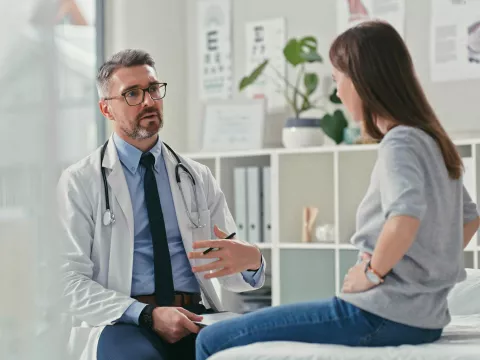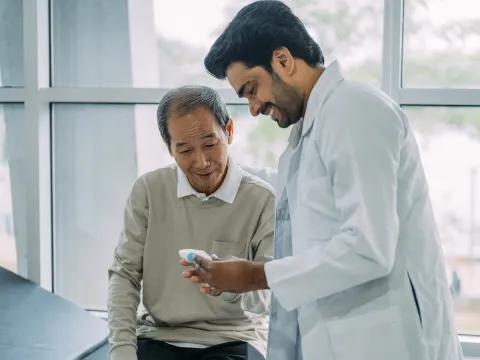- AdventHealth

Choose the health content that’s right for you, and get it delivered right in your inbox.
Endometriosis is sometimes the culprit of chronic and severe pelvic pain in people who menstruate. We’re here to help you learn more about what it is, who’s at risk, symptoms to know and treatment options to ask your doctor about.
What Is Endometriosis?
With endometriosis, tissue similar to that which lines the uterus — the endometrium — grows outside of the uterus. Endometriosis most commonly impacts the ovaries, fallopian tubes and the tissue that lines the pelvis.
This misplaced tissue acts like normal endometrial tissue does. It thickens, breaks down and bleeds with each menstrual cycle. But with no way to leave the body, it becomes trapped. This is why endometriosis pain tends to flare up the worst during certain points in the menstrual cycle as the tissue responds to the hormone fluctuations. It leads to bleeding inside the pelvis, inflammation, swelling and scarring of the surrounding normal tissue. It may also cause ovarian cysts, which can also be painful.
There are four stages of endometriosis, based on the location, amount, depth and size of the endometrial tissue. However, the stage doesn’t necessarily indicate how much pain someone might experience.
The endometriosis stages are categorized as:
Stage 1: Minimal
Stage 2: Mild
Stage 3: Moderate
Stage 4: Severe
Who Is at Risk for Endometriosis?
Anyone can develop endometriosis. However, there are some risk factors that increase the chances of developing it, such as:
- Abnormal uterus tissue
- Being between ages 25 and 40
- Giving birth for the first time after age 30
- Having a first-degree relative (mother, sister, daughter) with the disease
- Having never given birth
- Higher-than-average estrogen levels
Endometriosis Symptoms
Some of the most common endometriosis symptoms include:
- Abnormal and/or heavy menstrual flow
- Bloating
- Constipation
- Diarrhea
- Excessively painful menstrual cramps in the abdomen and/or lower back
- Fatigue
- Infertility problems
- Nausea
- Pain during intercourse
- Painful bowel movements during periods
- Painful urination during periods
- Stabbing pains and/or dull aches in the pelvic region
Endometriosis Treatment Options
Even though endometriosis is a chronic condition with no cure, there are ways to reduce the amount of pain with a number of treatment options.
Some typical endometriosis treatment options are:
- Hormone therapy like:
- Oral contraceptives, with combined estrogen and progestin (a synthetic form of progesterone) hormones, to prevent ovulation and reduce menstrual flow
- Progestins alone
- Gonadotropin-releasing hormone agonist, which stops ovarian hormone production, creating a sort of “medical menopause”
- Danazol, a synthetic derivative of testosterone (a male hormone
- Pain medication, such as:
- Over-the-counter medications like Tylenol
- Non-steroidal anti-inflammatory drugs (NSAIDs), such as ibuprofen
- Surgical options like:
- Hysterectomy
- Laparoscopy
- Laparotomy
Talking about your symptoms with your primary care provider or OB/GYN can help you understand which treatment method will work best for you.
Endometriosis Care With Your Whole Health in Mind
If you’re experiencing pelvic pain and you think it might be from endometriosis, our caring teams are here to help diagnose and treat what’s causing your pain. At every age and stage of life, we care for women in body, mind and spirit, treating you like we would our own daughters, mothers and sisters. Learn more about our women's care and find one of our world-class providers who can care for you like family.



